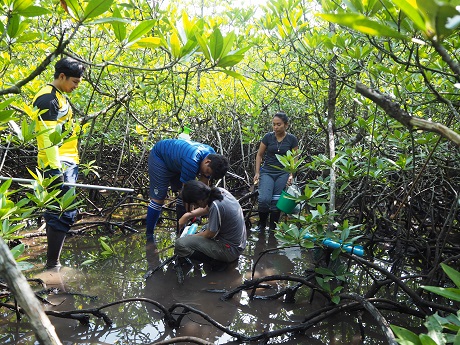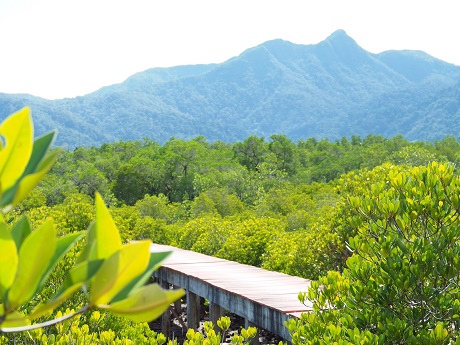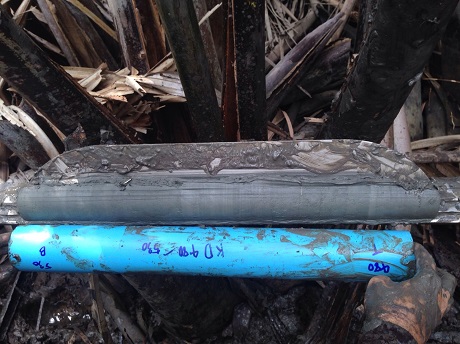Project Title: Holocene mangrove dynamics, environmental and human interactions with sea level changes along the eastern Gulf of Thailand
Research Title: Mangrove dynamics and environmental changes on Koh Chang, Thailand during the last millennium.
ปฏิสัมพันธ์ของการเปลี่ยนแปลงป่าชายเลน สิ่งแวดล้อม และมนุษย์กับการเปลี่ยนแปลงระดับน้ำทะเลตามแนวทะเลอ่าวไทยฝั่งตะวันออกในสมัยโฮโลซีน


Researcher(s): Apichaya Englong, Paramita Punwong, Katherine Selby, Rob Marchant, Paweena Traiperm, Nathsuda Pumijumnong
Affiliation: Faculty of Environment and Resource Studies, Mahidol University
Research Details (In Brief):
This study aims to investigate how mangrove ecosystems in this area have responded to sea level and anthropogenic changes in mainland and island coasts along the eastern Gulf of Thailand during the Holocene. This achieved through pollen and charcoal analyses that will be combined with, geochemistry, including loss on Ignition to establish organic and inorganic carbon to inform about sedimentary sources and deposition. These combined data will be used to disentangle environmental changes, mangrove ecosystem response and human impacts to the areas.
A 1500-year record of mangrove dynamics has been established from palaeoecological analyses on three cores from Salak Phet Bay, Koh Chang island in the eastern Gulf of Thailand. The occurrence of Rhizophora, accompanied by other mangrove species, suggested that Salak Phet Bay supported a mangrove community from at least 1500 cal yr BP. From 1500 cal yr BP the mangrove extent decreased indicating less inundation frequency, possibly in response to a sea-level fall until 1300 cal yr BP. Following this regression, sea-level rise resulted in an increased presence of mangrove taxa until 500 cal yr BP. The study documents that Salak Phet Bay was characterised by relatively low saline conditions based on the occurrence of the moist-loving species (Oncosperma) around 1500-500 cal yr BP. After 500 cal yr BP mangrove taxa gradually decreased and terrestrial herbaceous taxa, mainly grasses, increased suggesting that the frequency of marine inundation was reduced as sea level fell. Drier conditions were also recorded by an increase in terrestrial grasses and a decrease in Oncosperma after 500 cal yr BP. In the uppermost sediments the increased presence of Rhizophora is probably associated with recent global sea-level rise although changes in mangrove composition are possibly related to human activities within Koh Chang. The sedimentation rate and the mangrove migration at Koh Chang have kept pace over the past 1500 years but this may be challenged under predicted future rapid sea-level rise as accommodation space for mangroves to migrate inland is required to maintain viable mangrove forests.



.jpg)
Award Grant Related to the Project (if any): -
Intellectual Property Rights (if any): -
Applied Research Project to Usage (if any): -
Publishing: Englong, A., Punwong, P., Selby, K., Marchant, R., Traiperm, P., & Pumijumnong, N. 2019. Mangrove dynamics and environmental changes on Koh Chang, Thailand during the last millennium. Quaternary International 500, 128-138
Key Contact Person: Dr.Paramita Punwong, Faculty of Environment and Resource Studies, Mahidol University, Salaya, Nakhon Pathom, 73170, Thailand. E-mail address: This email address is being protected from spambots. You need JavaScript enabled to view it.
